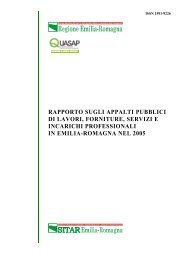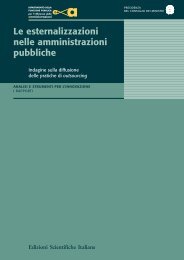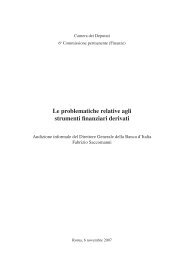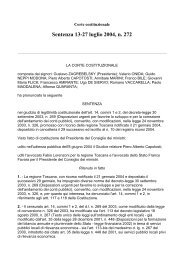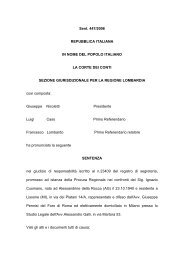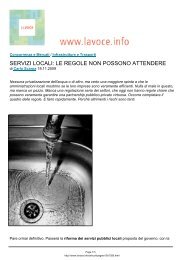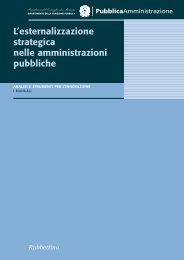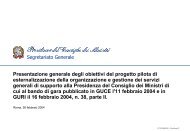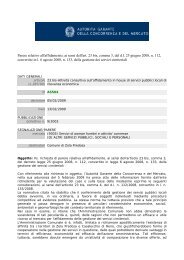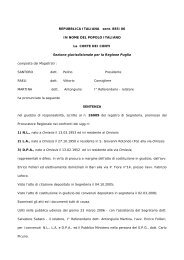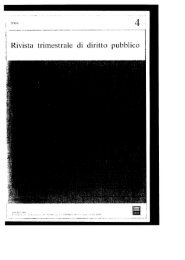Understanding the Public Services Industy
Understanding the Public Services Industy
Understanding the Public Services Industy
You also want an ePaper? Increase the reach of your titles
YUMPU automatically turns print PDFs into web optimized ePapers that Google loves.
<strong>Public</strong> <strong>Services</strong> Industry Review<br />
o<strong>the</strong>rs. There is a range of work which looks specifically at <strong>the</strong> cost savings which<br />
have been generated when competition is introduced in services previously supplied<br />
exclusively by <strong>the</strong> public sector. Frequently <strong>the</strong>se show cost savings of around 20 per<br />
cent. However, studies do tend to concentrate in a number of specific areas where<br />
more robust comparisons can be made – typically where many similar contracts have<br />
been issued, such as by a range of local authorities. Refuse collection and prisons are<br />
examples, as illustrated in Boxes 3.1 and 3.2.<br />
Box 3.1: Refuse Collection in <strong>the</strong> UK<br />
The 1988 Local Government Act introduced Compulsory Competitive Tendering (CCT)<br />
for a variety of local government activities including refuse collection. Prior to this,<br />
although local authorities could choose to contract out, <strong>the</strong> practice was uncommon.<br />
CCT required local authorities to regularly compete <strong>the</strong>ir refuse collection contracts<br />
and laid down guidelines for how in-house providers would be allowed to participate<br />
in <strong>the</strong> tender process in order to ensure fair competition.<br />
The introduction of CCT led to significant reductions in <strong>the</strong> average cost of refuse<br />
collection, with most estimates suggesting savings of <strong>the</strong> order of 20 per cent in <strong>the</strong><br />
first year 22 . Although <strong>the</strong>re is evidence to suggest that <strong>the</strong> average cost reduction was<br />
greater in authorities who awarded <strong>the</strong> contract to a private ra<strong>the</strong>r than <strong>the</strong> in-house<br />
bidder, <strong>the</strong> latter still delivered significant savings. This suggests that it was <strong>the</strong> act of<br />
opening up services to competition, ra<strong>the</strong>r than <strong>the</strong> nature of <strong>the</strong> provision (private or<br />
public) which reduced costs.<br />
The data on <strong>the</strong> impact of CCT on service quality in refuse collection is more<br />
ambiguous, hampered by <strong>the</strong> fact that prior to its introduction service standards were<br />
often poorly specified making it difficult to compare ex-ante and ex-post measures of<br />
service quality. Analysis of what data are available suggests that <strong>the</strong>re is no systematic<br />
link between cost savings generated by <strong>the</strong> introduction of CCT and quality shading<br />
by providers 23 .<br />
3.9 Work in o<strong>the</strong>r areas has also found that substantial cost reductions were achieved<br />
when competition was introduced into areas where it previously did not exist. In<br />
hospital domestic services competitive tendering has been found to reduce costs by 34<br />
per cent (Domberger et al, 1987) – and it matters little whe<strong>the</strong>r <strong>the</strong> bid is won in-house<br />
or by <strong>the</strong> private sector. As described in Box 3.2 competition and contracting have<br />
brought significant benefits in <strong>the</strong> prison sector as well where cost savings appear to<br />
be more than 20 per cent (CBI, 2003). International evidence also points to significant<br />
cost reductions. The Australian Industry Commission’s meta study (1996) of 203<br />
international studies of competitive tendering found savings across sectors of between<br />
10-30 per cent. Recent findings from <strong>the</strong> contracting of primary care services through<br />
22 Domberger, Meadowcroft and Thomson (1986), Szymanski and Wilkins (1993) and Szymanski (1996).<br />
23 Szymanski (1996).<br />
27



